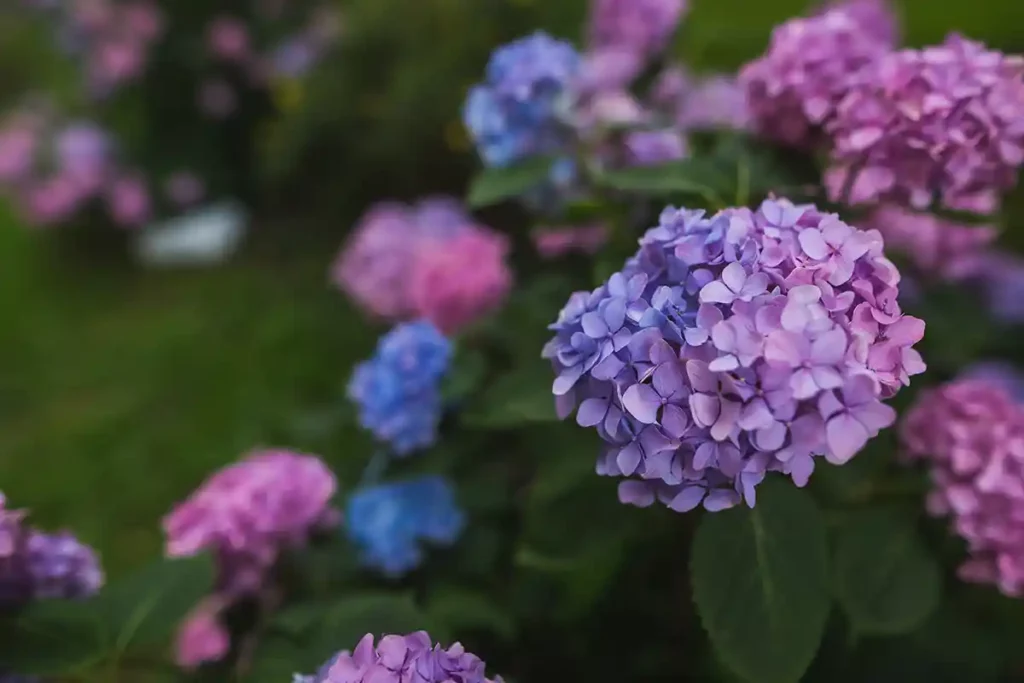Hydrangeas in bloom: Bring some late-summer colour to your garden

Haskins Garden Centre’s in-house plant expert, Alasdair Urquhart, gives his tips on planting hydrangeas for late summer and early autumn colour.
Late summer into early autumn is the perfect time to plant hydrangeas to add vibrancy to your garden. If you plant wisely during August and early September, you can ensure your garden flourishes with a bright range of colourful flowers as the summer begins to cool. These flowers are easy to cultivate and thrive in almost any soil, producing flowers well into the autumn months.
Haskins Garden Centre’s in-house plant expert Alasdair Urquhart shares his top tips for planting out these multi-faceted flowers for some late summer and early autumn colour.
“Hydrangeas can be found in clear blues, vibrant pinks, frosty whites, and even lime greens. You could plant a variety of hydrangeas to create a colourful display that you can enjoy in the late summer months. These versatile flowers can thrive in most soils but do best in areas that are well-drained in a cool and semi-shaded part of the garden. This preference for slight shade means they should be planted away from more sun-loving plants such as agapanthus.”
How to care for your hydrangeas
Hydrangeas are easy-to-care-for flowering shrubs that are beloved by gardeners for their generous blooms in a range of stunning colours. These flowers are fast growing, averaging about two feet of growth per year, with the largest varieties reaching up to 15 feet tall.
“With regular watering and some basic pruning to maintain the shape and style of your hydrangeas, you can enjoy your blooms for months on end. You can prune after the hydrangeas have flowered, removing spent flower heads, and trimming back wayward branches.”
There are two main groups of hydrangeas, distinguished by how they flower. If there are buds already on the branches, then it blooms on old wood. If there are not yet buds in the fall, then it will push them out on new growth the following spring. Alasdair advises,
“This year’s stems will form their buds in early summer on new growth and will flower reliably each year, requiring no special care. They can be pruned after flowering, removing spent flower heads, and trimming back wayward branches.”
For flowers that bloom on old growth, Alasdair says,
“Pruning is done after the blooms have faded. A common mistake is to prune before the flowers have bloomed, resulting in a lack of flowers the following year. The oakleaf and climbing hydrangea varieties require minimal pruning. Long stems and dead wood can be removed in spring along with spent flower heads.”
Caring for hydrangeas once planted is relatively straightforward. They thrive best in a moist but well-drained soil and in a cool, semi-shaded part of the garden. Alasdair also advises,
“They won’t perform very well in east-facing sites, where cold winds can damage new growth and nor will they do well in dry, sunny spots. Originating from wooded areas, plant them with plenty of organic matter and give them an annual mulch of well-rotted leaf mould, garden compost or composted bark.
“If you notice that your hydrangeas are not flowering as you would expect, this is likely the result of pruning at the wrong time of year. Temperature changes can lead to leaves discolouring to purple hues, but this change will naturally revert to green as temperature increases again.”
Colour changes
The flower colour of hydrangeas changes over time. It is common for these flowers to naturally change by themselves in the late summer. Blue and pink flowers fade to become combinations of green and pink or red whilst white flowers typically become a vibrant pink. This is a natural seasonal change and cannot be halted or reversed. Be assured that the natural colour will return the following year.
Alasdair offers guidance on encouraging the colour of your hydrangeas to evolve, saying,
“Gardeners can encourage a colour change because hydrangeas are sensitive to soil pH, which affects aluminium availability. Hydrangeas produce blue flowers in acidic conditions and pink flowers in alkaline conditions. By adjusting the pH of the soil, by adding lime to make it more alkaline for example, the flowers will naturally respond. If you want to grow blue varieties on alkaline soil, you should use a hydrangea colourant product which adds aluminium to the soil, thus ensuring bright blue blooms.”
